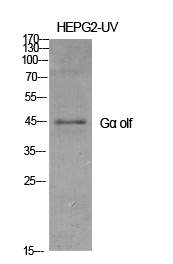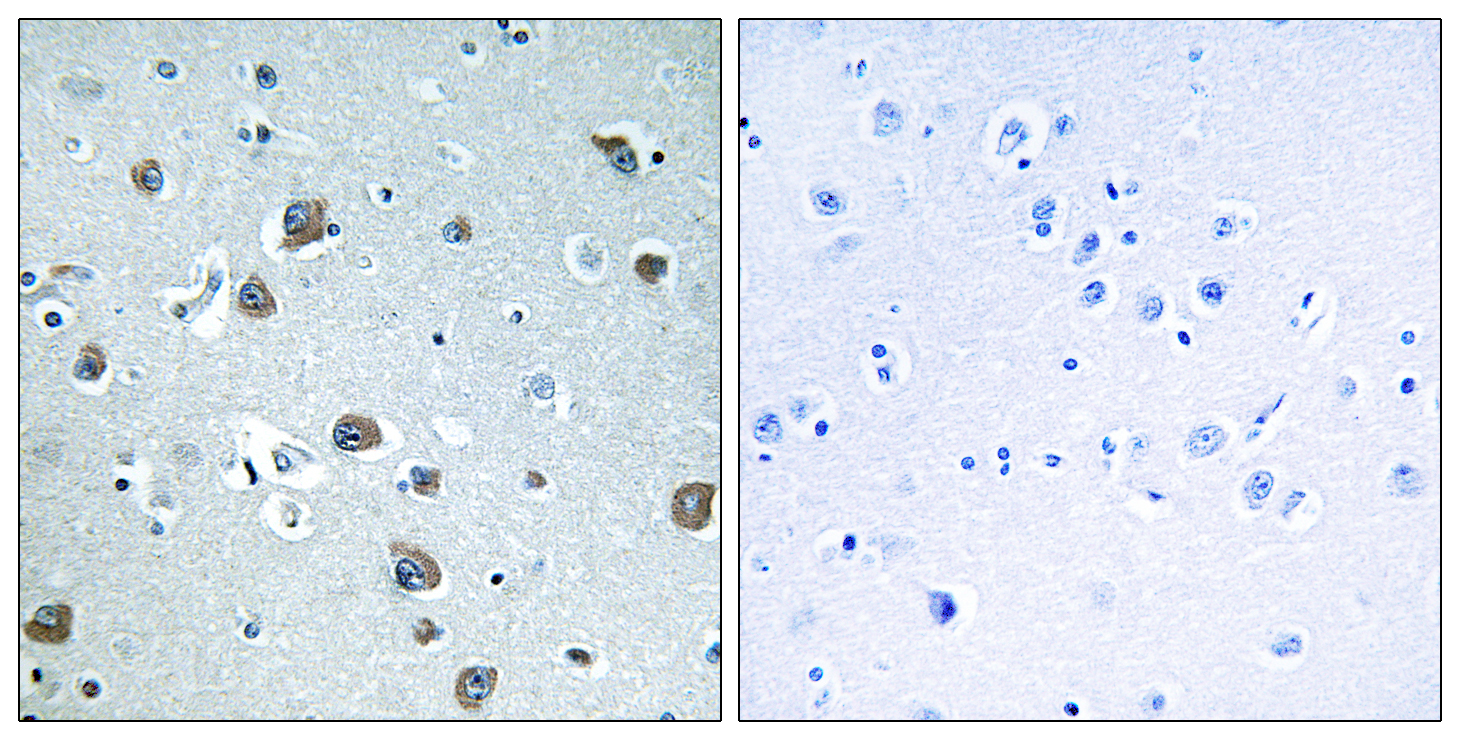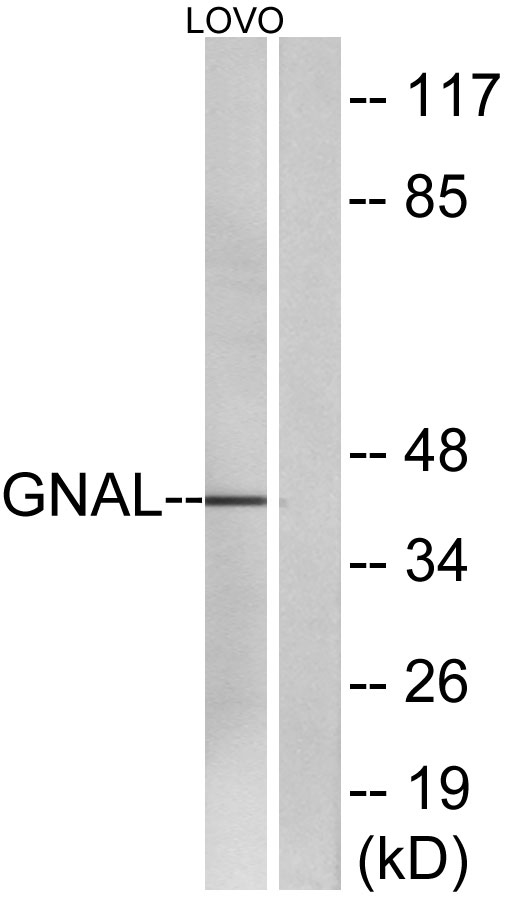Gα olf Polyclonal Antibody
- Catalog No.:YT2093
- Applications:WB;IHC;IF;ELISA
- Reactivity:Human;Mouse;Rat
- Target:
- Gα olf
- Fields:
- >>Calcium signaling pathway;>>Dopaminergic synapse;>>Olfactory transduction;>>Parkinson disease;>>Chagas disease;>>Amoebiasis
- Gene Name:
- GNAL
- Protein Name:
- Guanine nucleotide-binding protein G(olf) subunit alpha
- Human Gene Id:
- 2774
- Human Swiss Prot No:
- P38405
- Mouse Gene Id:
- 14680
- Mouse Swiss Prot No:
- Q8CGK7
- Rat Swiss Prot No:
- P38406
- Immunogen:
- The antiserum was produced against synthesized peptide derived from human GNAL. AA range:41-90
- Specificity:
- Gα olf Polyclonal Antibody detects endogenous levels of Gα olf protein.
- Formulation:
- Liquid in PBS containing 50% glycerol, 0.5% BSA and 0.02% sodium azide.
- Source:
- Polyclonal, Rabbit,IgG
- Dilution:
- WB 1:500 - 1:2000. IHC 1:100 - 1:300. ELISA: 1:20000.. IF 1:50-200
- Purification:
- The antibody was affinity-purified from rabbit antiserum by affinity-chromatography using epitope-specific immunogen.
- Concentration:
- 1 mg/ml
- Storage Stability:
- -15°C to -25°C/1 year(Do not lower than -25°C)
- Other Name:
- GNAL;Guanine nucleotide-binding protein G(olf) subunit alpha;Adenylate cyclase-stimulating G alpha protein; olfactory type
- Observed Band(KD):
- 40kD
- Background:
- G protein subunit alpha L(GNAL) Homo sapiens This gene encodes a stimulatory G protein alpha subunit which mediates odorant signaling in the olfactory epithelium. This protein couples dopamine type 1 receptors and adenosine A2A receptors and is widely expressed in the central nervous system. Mutations in this gene have been associated with dystonia 25 and this gene is located in a susceptibility region for bipolar disorder and schizophrenia. Alternative splicing results in multiple transcript variants. [provided by RefSeq, Dec 2013],
- Function:
- function:Guanine nucleotide-binding proteins (G proteins) are involved as modulators or transducers in various transmembrane signaling systems. G(olf) alpha mediates signal transduction within the olfactory neuroepithelium and the basal ganglia. May be involved in some aspect of visual transduction, and in mediating the effect of one or more hormones/neurotransmitters.,similarity:Belongs to the G-alpha family. G(s) subfamily.,subunit:G proteins are composed of 3 units; alpha, beta and gamma. The alpha chain contains the guanine nucleotide binding site.,tissue specificity:Detected in olfactory neuroepithelium, brain, testis, and to a lower extent in retina, lung alveoli, spleen. Trace amounts where seen in kidney, adrenal gland and liver. Found to be expressed in all the insulinomas examined.,
- Subcellular Location:
- plasma membrane,extracellular exosome,
- Expression:
- Detected in olfactory neuroepithelium, brain, testis, and to a lower extent in retina, lung alveoli, spleen. Trace amounts where seen in kidney, adrenal gland and liver. Found to be expressed in all the insulinomas examined.
- June 19-2018
- WESTERN IMMUNOBLOTTING PROTOCOL
- June 19-2018
- IMMUNOHISTOCHEMISTRY-PARAFFIN PROTOCOL
- June 19-2018
- IMMUNOFLUORESCENCE PROTOCOL
- September 08-2020
- FLOW-CYTOMEYRT-PROTOCOL
- May 20-2022
- Cell-Based ELISA│解您多样本WB检测之困扰
- July 13-2018
- CELL-BASED-ELISA-PROTOCOL-FOR-ACETYL-PROTEIN
- July 13-2018
- CELL-BASED-ELISA-PROTOCOL-FOR-PHOSPHO-PROTEIN
- July 13-2018
- Antibody-FAQs
- Products Images

- Western Blot analysis of various cells using Gα olf Polyclonal Antibody diluted at 1:1000
.jpg)
- Western Blot analysis of HEPG2-UV cells using Gα olf Polyclonal Antibody diluted at 1:1000

- Immunohistochemistry analysis of paraffin-embedded human brain tissue, using GNAL Antibody. The picture on the right is blocked with the synthesized peptide.

- Western blot analysis of lysates from LOVO cells, using GNAL Antibody. The lane on the right is blocked with the synthesized peptide.



